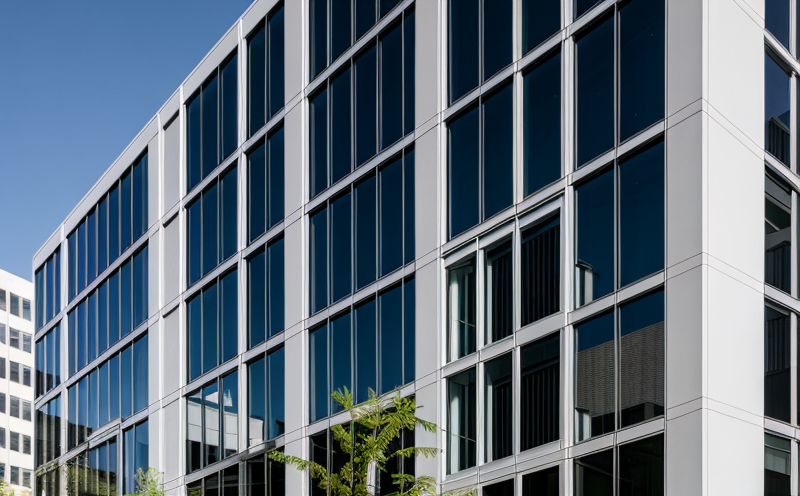ISO 9050 Determination of Light Transmittance of Glass
The ISO 9050 standard is a crucial method for determining light transmittance in glass. This testing procedure ensures that the optical properties of glass meet specific quality standards, which are essential for various applications including architectural design and photovoltaic technology.
Light transmittance refers to the amount of visible and near-infrared light that can pass through a material. In glass, this property is not only critical for aesthetic reasons but also plays a significant role in energy efficiency, heat management, and overall building performance. The ISO 9050 method provides a standardized way to measure these optical properties accurately.
The testing process involves several steps that ensure precision and reliability. Specimens are prepared according to the guidelines specified in the standard, ensuring they represent typical conditions under which the glass will be used. Once prepared, the specimens undergo testing using specialized instruments designed specifically for this purpose.
One of the key aspects of ISO 9050 is its ability to provide consistent results across different labs and regions. This consistency is vital because it allows manufacturers, architects, and engineers to compare data reliably when making decisions about glass types and their applications.
The standard covers various types of flat glass, including clear, tinted, and laminated glasses. It also addresses the measurement of light transmittance in different wavelengths, which is important for understanding how much visible and near-infrared light can pass through a given sample.
Accurate determination of light transmittance helps in optimizing building designs to reduce energy consumption by minimizing unwanted heat gain during summer months while allowing sufficient daylight inside buildings during winter. This optimization contributes significantly towards creating sustainable, comfortable environments within structures.
To achieve accurate results using ISO 9050, it’s important to follow all prescribed procedures meticulously from specimen preparation through final analysis. Non-compliance can lead to inaccurate readings that might mislead decision-makers regarding the suitability of particular glass products for specific projects.
Given its importance in ensuring quality and compliance with international standards, ISO 9050 is widely used across industries such as construction, architecture, and renewable energy sectors. Its application ensures that only high-quality materials are employed in critical applications where safety and performance are paramount.
Scope and Methodology
| Aspect of the Test | Description |
|---|---|
| Preparation of Specimens | Specimens should be representative of the glass to be tested. They must have a clean, smooth surface free from defects. |
| Measurement Setup | The measurement setup includes an integrating sphere and a spectroradiometer calibrated according to ISO 9051. |
| Data Collection | Data is collected at regular intervals across the visible spectrum (380-780 nm). |
| Calculation of Transmittance | The light transmittance value is calculated as the ratio of incident light to transmitted light. |
Benefits
Determining light transmittance through ISO 9050 brings numerous benefits, both for manufacturers and end-users. For manufacturers, it ensures that their products meet stringent quality standards, enhancing brand reputation and customer trust.
- It guarantees consistent performance across batches of glass produced.
- Enables identification and rectification of any issues during the manufacturing process early on.
- Promotes innovation by allowing for continuous improvement based on reliable data.
For end-users, especially in the construction sector, accurate light transmittance measurements contribute to better building performance. This includes improved energy efficiency, enhanced thermal comfort indoors, and reduced maintenance costs over time due to longer-lasting materials.
In addition, compliance with ISO 9050 helps businesses avoid costly penalties associated with non-compliance or substandard products. It also facilitates easier integration into green building certifications like LEED (Leadership in Energy & Environmental Design), which increasingly prioritize sustainable practices and energy-efficient designs.
Environmental and Sustainability Contributions
- Reduces the carbon footprint by optimizing energy usage in buildings.
- Promotes natural ventilation, reducing reliance on artificial lighting during daylight hours.
- Contributes to waste reduction through proper recycling practices informed by accurate testing results.
- Supports renewable energy adoption by enabling better integration of photovoltaic systems into building facades.





